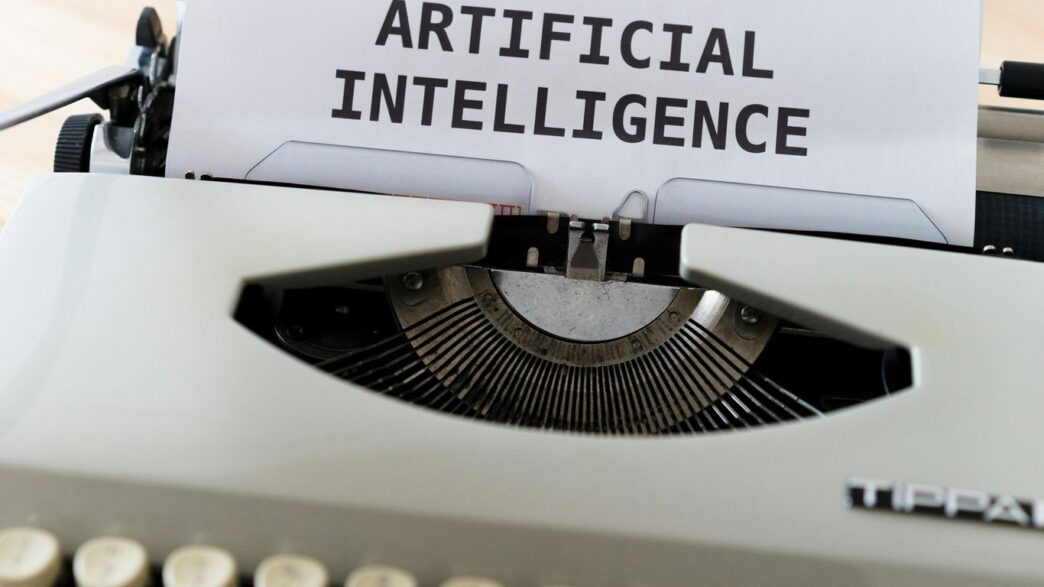So, 2025 is almost here, and it looks like compliance AI is really going to shake things up. We’re talking about tools that can actually predict problems before they happen, making things way easier for companies trying to keep up with all the rules. It’s not just about checking boxes anymore; it’s about being smarter and faster. This whole compliance AI thing is set to change how businesses operate, especially when it comes to managing risks and staying on the right side of the law. Let’s see what’s coming down the pipeline.
Key Takeaways
- AI is changing how companies handle compliance, making it more proactive and efficient.
- Predicting future compliance issues is becoming a reality with advanced AI tools.
- Transparency and understanding how AI makes decisions are now super important for compliance.
- Specialized AI agents will offer ready-made solutions for different industries, cutting down on setup time.
- Generative AI will help automate the creation of compliance documents and simplify complex rules.
The Evolving Landscape Of Compliance AI

Compliance work used to be a real slog, right? Lots of paperwork, endless checking, and always that nagging feeling you might have missed something. But things are changing, and fast. AI is stepping in, and it’s not just about making things a little easier; it’s fundamentally shifting how we handle compliance.
Predictive Compliance Analytics For Proactive Risk Management
Think about it: instead of just reacting when something goes wrong, what if you could see it coming? That’s what predictive analytics is starting to do for compliance. It looks at all the data we have – past issues, market trends, even news about new regulations – and tries to spot potential problems before they even show up. This means we can actually get ahead of risks, rather than just cleaning up messes. For example, AI can flag unusual patterns in financial transactions that might point to fraud, or notice subtle shifts in regulatory language that signal upcoming changes we need to prepare for.
AI-Enhanced Whistleblower Systems For Transparency
Whistleblower hotlines have been around forever, but they’ve often been a bit of a black box. Now, AI is making them smarter. These systems can help sort through the reports that come in, figure out which ones are most serious, and even start gathering relevant information for an investigation. This doesn’t replace the human element, but it makes the whole process quicker and more organized. It helps build trust because people know their concerns are being looked at seriously and efficiently.
Streamlining Operations With Compliance Automation Software
This is where a lot of the day-to-day grind gets taken off our plates. Think about tasks like reviewing documents, keeping audit trails, or even drafting initial reports. AI-powered software can handle a lot of this automatically. It’s not about replacing compliance officers, but about freeing them up from repetitive work so they can focus on the more complex, strategic parts of the job. This means fewer errors, faster processing, and a more consistent approach to following the rules.
Leveraging Compliance AI For Enhanced Risk Assessment
When we talk about compliance in 2025, just reacting to problems isn’t really an option anymore. We need to get ahead of things, and that’s where AI really starts to shine. It’s not just about ticking boxes; it’s about building a smarter way to see risks before they become big headaches. Think of it like having a really good weather forecast for your business – you know what might be coming and can prepare.
AI Tools For Dynamic Risk Registers
Remember those old risk registers? Big spreadsheets, updated maybe once a quarter if you were lucky. They were static, and honestly, a bit of a pain to keep current. Now, AI is changing that. We’re seeing tools that can automatically update risk scores based on new data, regulatory changes, or even news events. It’s like your risk register is alive and breathing, constantly reflecting what’s actually happening.
- Automated Risk Mapping: AI can connect identified risks directly to specific controls and regulatory requirements. This means less manual work trying to figure out what applies where.
- Real-time Updates: As new information comes in – maybe a new law is passed or a supplier has an issue – the system can adjust risk levels on the fly.
- Predictive Insights: Some tools can even flag potential future risks based on patterns in data, giving you a heads-up before something becomes a full-blown problem.
Understanding AI-Powered Risk Management
So, what does AI-powered risk management actually look like? It’s about using AI to analyze vast amounts of data – internal reports, external news, regulatory filings – to spot patterns and anomalies that humans might miss. This isn’t about replacing people, but giving them better tools. The goal is to move from a reactive stance to a proactive one, where potential issues are identified and addressed early. It means compliance teams can spend less time sifting through data and more time strategizing and mitigating actual threats.
Integrating Compliance AI With Enterprise Risk Management
Bringing compliance AI into your broader Enterprise Risk Management (ERM) framework is where things get really interesting. It’s not just about compliance risks anymore; it’s about how those risks connect to financial, operational, and strategic risks. When your compliance AI can talk to your ERM system, you get a much clearer, unified picture of your organization’s risk landscape. This integration helps leadership make more informed decisions because they’re seeing the full story, not just one piece of it. It helps break down silos between departments, making risk management a more cohesive effort across the entire company.
Governing The AI That Powers Compliance
So, AI is doing a lot of the heavy lifting for compliance these days, which is pretty cool. But it also means we’ve got a whole new set of things to worry about. It’s not just about whether our company is following the rules anymore; it’s also about whether the AI tools we’re using are themselves trustworthy. Think of it like this: if you’re using a calculator to do your taxes, you still need to make sure the calculator actually works right, right? Europe is already making this a big deal. They’ve basically said that AI used for compliance is a “high-risk” category. This means companies have to be ready to show how their AI models function, how they’re checking for bias, and how they can explain the AI’s decisions to auditors. It’s a bit like needing a nutrition label for your AI. Some experts are saying we’re seeing too much “compliance theater” – just going through the motions without real substance. The World Economic Forum has even suggested that AI used in sensitive areas like compliance needs its own set of rules.
Ensuring Accountability And Explainability In Compliance AI
This is where things get a bit tricky. When an AI flags something as a compliance issue, we need to know why. Being able to explain how an AI reached a conclusion is becoming non-negotiable. This isn’t just about satisfying auditors; it’s about building trust in the system. We need to be able to trace the AI’s logic, understand its data inputs, and identify any potential biases that might have crept in. It’s a bit like needing a clear audit trail, but for algorithms.
Here’s a quick look at what we’re talking about:
- Transparency: Knowing what data the AI used and how it was trained.
- Explainability: Being able to articulate the AI’s decision-making process in human terms.
- Fairness: Actively checking for and mitigating biases that could lead to unfair outcomes.
- Auditability: Having records that show how the AI operated and why it made specific recommendations.
Navigating High-Risk AI Regulations
As AI gets more involved in compliance, governments are starting to pay closer attention. The EU AI Act is a prime example, classifying compliance AI as high-risk. This means more documentation, more scrutiny, and more responsibility for companies. We’re seeing similar trends elsewhere, with agencies looking at how AI is marketed and used. It’s a sign that regulators are catching up to the technology and want to make sure it’s not causing more problems than it solves. For businesses, this means staying on top of these evolving rules is key.
Building AI Assurance Into Compliance Strategies
So, what does this all mean for how we do compliance? It means we need to think about AI assurance. This is about making sure the AI tools we rely on are reliable, secure, and fair. It’s not enough to just implement AI; we have to build checks and balances around it. Think of it as a second layer of compliance, specifically for the AI itself. This might involve:
- Vendor Due Diligence: Carefully vetting AI providers to understand their development practices and data security.
- Internal Testing: Regularly testing AI models for accuracy, bias, and performance drift.
- Human Oversight: Establishing clear processes for human review of AI-generated recommendations, especially for critical decisions.
- Documentation: Maintaining detailed records of AI system configurations, updates, and performance metrics.
Industry-Specific AI Agents In Compliance
Forget those one-size-fits-all compliance tools from the past. The real game-changer in 2025 is going to be AI agents built specifically for your industry. Think of it like having a specialist lawyer on staff, but for regulatory matters. These aren’t just generic programs; they’re trained on the exact rules, standards, and common issues that pop up in fields like pharmaceuticals, finance, or food production.
Tailored AI Solutions For Specialized Sectors
This means AI that understands the nuances of FDA regulations for drug manufacturing, or the specific reporting requirements for a bank. Instead of trying to force a general compliance bot to learn your business, these specialized agents come pre-loaded with the knowledge you need. It’s about getting relevant insights right out of the box.
Achieving Out-Of-The-Box Relevance
What does this mean in practice? It means less time spent teaching the AI about your industry and more time actually using it to identify risks or ensure you’re meeting all your obligations. For example, an AI agent for a biotech firm might flag potential issues with clinical trial data management based on its deep understanding of that sector’s specific regulatory landscape. It’s about making compliance smarter, not just faster.
Reducing Lengthy Customization Processes
Previously, getting a compliance software to work for a niche industry could involve months of custom coding and configuration. With these specialized AI agents, that lengthy, expensive process is becoming a thing of the past. You get a tool that’s already speaking your industry’s language, allowing your compliance team to focus on strategic oversight rather than technical setup. This shift is making advanced compliance technology accessible to a much wider range of businesses, regardless of their size or sector.
Generative AI’s Role In Compliance Documentation
Okay, so we’ve talked a lot about AI helping us find compliance issues, but what about the paperwork? That’s where generative AI, like the fancy language models you hear about, is really starting to make a difference. Think about all the policies, reports, and submissions that compliance teams have to churn out. It’s a ton of work, and honestly, a lot of it is pretty repetitive.
Automating Policy Updates and Regulatory Submissions
This is a big one. Generative AI can actually draft updates to your company policies. You know, when a new regulation drops, instead of someone spending hours trying to figure out how to change the wording in your employee handbook, an AI can take the new rule and suggest the updated text. It’s not perfect, of course, and you still need a human to give it the final sign-off, but it cuts down the time dramatically. The same goes for regulatory submissions. These often follow a pretty standard format, and AI can help fill in the blanks, making sure all the required information is there and formatted correctly. This frees up compliance pros to focus on the strategic stuff, not just the grunt work.
Simplifying Complex Regulations With LLMs
Let’s be real, reading through dense legal or regulatory text can be a headache. Large Language Models (LLMs) are pretty good at taking that complicated jargon and breaking it down into plain English. Imagine a compliance officer needing to understand a new data privacy law. Instead of wading through pages of legalese, they could ask an LLM to explain the key requirements in simple terms, or even summarize the main points. This makes it way easier for everyone in the company, not just the compliance team, to grasp what’s expected of them.
Reducing Manual Documentation Efforts
Beyond policies and submissions, there’s just a mountain of other documentation. Think audit reports, internal memos explaining compliance procedures, or even training materials. Generative AI can help create drafts for all of these. It can take raw data from an audit and help structure it into a report, or it can take a set of compliance rules and turn them into an easy-to-understand guide for employees. This isn’t about replacing people, but about giving them tools to be more efficient. It’s like having a really fast, really organized assistant who’s great at writing.
Real-Time Harmonization With Cross-Jurisdictional AI
Keeping up with regulations across different countries or even states can feel like a full-time job on its own. It’s a tangled mess, right? One rule here, a slightly different one there, and then something completely new pops up. AI is starting to untangle this global regulatory knot.
Navigating Fragmented Global Regulations
Think about a company selling products in Europe, North America, and Asia. Each region has its own set of rules for things like data privacy, product safety, or environmental impact. These rules aren’t just different; they can sometimes contradict each other. Manually tracking and interpreting all these variations is a huge undertaking, prone to errors and delays. AI tools can scan and process regulatory documents from dozens of jurisdictions simultaneously. They can identify common themes, pinpoint unique requirements, and flag potential conflicts before they become compliance issues. This means businesses can get a clearer picture of what they need to do in each market without drowning in paperwork.
Mapping Conflicting Standards With AI
When regulations clash, it creates a real headache. For instance, a data retention policy that’s perfectly fine in one country might violate privacy laws in another. AI can be trained to recognize these conflicts. It can build a map of how different regulatory requirements interact, highlighting areas where a company’s current practices might be out of sync with one or more jurisdictions. This isn’t just about listing rules; it’s about understanding the complex web they form.
Here’s a look at how AI helps map these conflicts:
- Source Identification: AI systems continuously monitor official government sites, legal databases, and industry publications across various regions.
- Content Analysis: Using natural language processing, AI breaks down regulatory texts to extract key obligations, effective dates, and affected parties.
- Conflict Detection: Algorithms compare extracted information from different jurisdictions, flagging discrepancies and potential clashes in requirements.
- Impact Assessment: The AI can then estimate the potential impact of these conflicts on business operations and compliance strategies.
Recommending Region-Specific Compliance Adjustments
Once conflicts are identified, the next step is figuring out what to do. AI can go beyond just pointing out problems; it can suggest solutions. Based on the identified conflicts and the company’s specific operational context, AI can recommend tailored adjustments. This might involve suggesting modifications to internal policies, changes to product design, or specific documentation needed for a particular market. For example, if a new environmental regulation is introduced in Germany that differs from existing EU-wide standards, an AI system could alert a company and suggest specific reporting formats or emission control measures required for the German market, while also noting how this fits (or doesn’t fit) with broader EU directives. This proactive, data-driven approach helps companies stay compliant and competitive on a global scale.
The Future Of Automated Regulatory Intelligence

So, where is all this automated regulatory intelligence (ARI) headed? It’s not just about keeping up anymore; it’s about getting ahead. Think of it as moving from just reacting to what the regulators say, to actually anticipating what they might say next. This is a pretty big shift for compliance teams who are used to a more reactive stance.
Predictive Compliance Systems For Anticipating Shifts
Right now, ARI tools are pretty good at telling us what regulations have changed and what they mean for our business. But the next big thing is using AI to predict future regulatory changes. By looking at past trends, how laws usually get made, and what’s happening in the world, AI could start giving us a heads-up on upcoming rules. This is especially important in areas that change fast, like rules about AI itself, environmental reporting (ESG), or how companies handle digital privacy. Imagine getting a warning that new data protection rules are likely coming in Europe next year, giving you plenty of time to get ready.
AI As A Strategic Engine For Regulatory Risk Management
Instead of just being a tool for the compliance department, ARI is becoming a core part of how a whole company manages risk. Future ARI platforms will connect more closely with the company’s overall risk management plans. This means compliance teams can show how regulatory changes connect to bigger business risks, like financial losses or damage to the company’s reputation. It helps compliance move from being a back-office function to a more strategic player in business decisions.
The Rise Of Data-Driven, AI-Augmented Regulation
We’re seeing a move towards using data and AI to make regulations themselves smarter. This means regulators might use AI to spot risks or trends that need new rules. For companies, this translates to more dynamic and data-focused compliance. It’s about using AI to not just follow rules, but to understand the ‘why’ behind them and how they fit into the bigger picture of business operations and risk. This data-driven approach means compliance becomes less about ticking boxes and more about actively managing risk in a changing world.
Looking Ahead: The Evolving Landscape of Compliance AI
So, as we wrap up our look at compliance AI for 2025, it’s clear this technology isn’t just a passing trend. It’s fundamentally changing how businesses handle regulations. We’ve seen how AI can speed things up, catch errors, and even help predict what’s coming next. But it’s not all smooth sailing. We also need to think about making sure the AI itself is fair and understandable, especially with new rules coming out. The big takeaway? AI is a powerful tool for compliance, but it needs smart people guiding it. Getting this right means staying ahead of the curve and building trust, both internally and with regulators. It’s about using AI to work smarter, not just faster, and making sure we’re ready for whatever comes next in the regulatory world.
Frequently Asked Questions
What is Compliance AI and why is it important?
Compliance AI is like a super-smart helper for businesses that need to follow rules. It uses computer smarts (AI) to keep track of all the laws and regulations, which is super complicated! It helps companies avoid getting into trouble, makes things run smoother, and can even guess what new rules might be coming. Think of it as a digital watchdog that never sleeps, making sure everything is done the right way.
How does AI help businesses manage risks better?
Imagine a business has a list of things that could go wrong, called risks. AI can look at past problems and current trends to figure out which risks are most likely to happen and how bad they could be. It’s like having a crystal ball that tells you where to focus your attention to prevent bad things from happening, instead of just cleaning up messes after they occur.
Can AI systems be trusted to be fair and understandable?
That’s a great question! Since AI is making important decisions, people want to know it’s not biased and that we can understand how it reaches its conclusions. New rules are being made to make sure AI is fair, like requiring companies to explain how their AI works, similar to how a recipe explains how to make a dish. It’s important that the AI we use is honest and clear.
Are there special AI tools for different types of businesses?
Yes! Just like a doctor needs different tools than a mechanic, different businesses need different AI help. AI can be trained specifically for industries like banking, healthcare, or food production. This means the AI already knows the specific rules and common problems for that industry, so it works better right away without needing a lot of custom setup.
How can AI help with writing compliance documents?
Writing up rules, policies, and reports can be a huge chore. AI, especially a type called generative AI, can help write drafts of these documents automatically. It can also take really long, confusing regulations and explain them in simple terms. This saves a ton of time and effort, letting people focus on the important thinking parts.
What happens when rules are different in different countries?
Global businesses have to follow rules from many places, and these rules can sometimes clash. AI can be a big help here by comparing all the different rules from various countries. It can then suggest the best way to follow all of them, or point out where adjustments are needed for each specific region. It’s like having a translator and guide for international rules.












